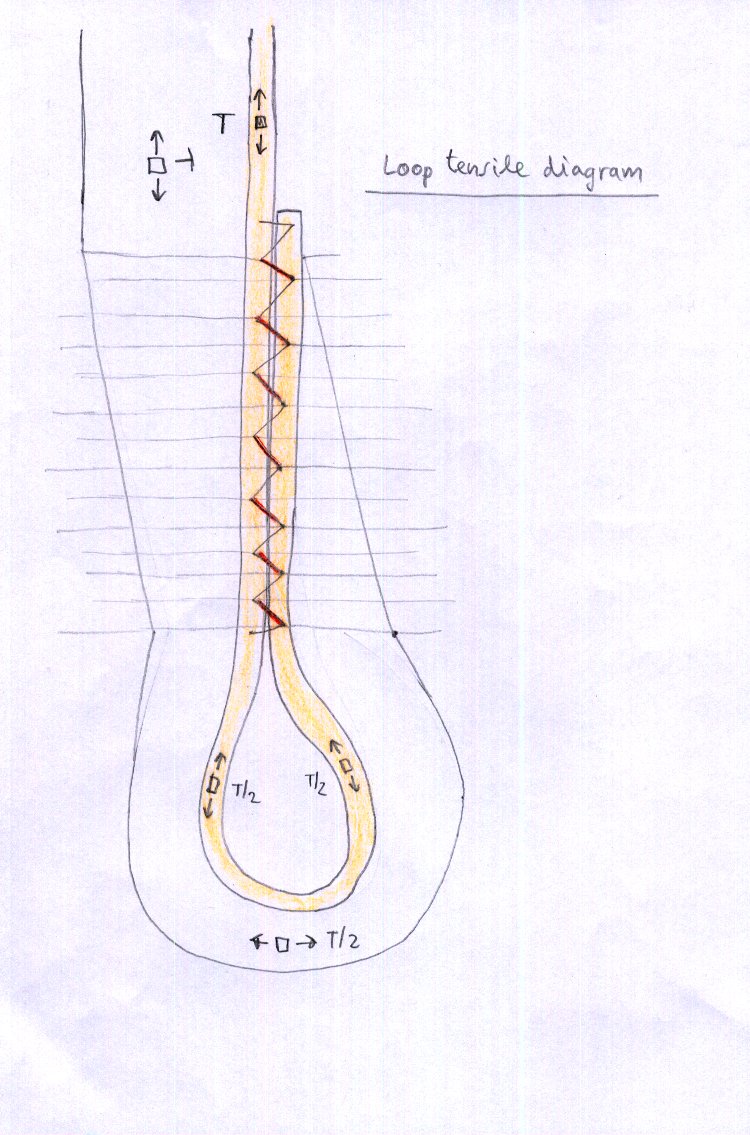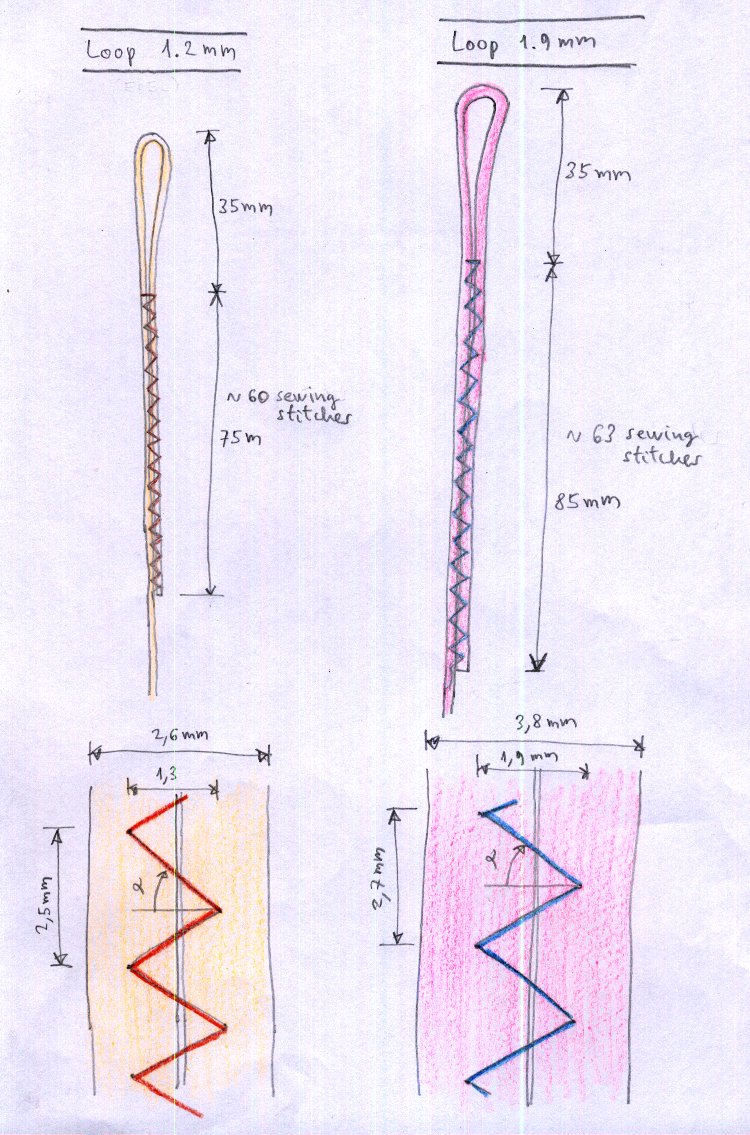
LINE SEWING. THEORETICAL AND PRACTICAL ASPECTS
1. Theoretical aspects

Fig 1. Loop tensile diagram

Fig 2. Loop equilibrium
The above formula needs to be improved as follows:
1) Consider the resistance of the thread is twice, due to the upper and lower thread.
2) The zigzag stitch consists of two types:
Traction stitches (drawn in red) work when the loop tend to slide.
Complementary stitches only work adding friction force.
Consequently. The formula can be improved, according to the following expression:
N=F / (4·T·(((sin (alpha) ) + (2·mu·cos (alpha)))

Fig 3. Example of calculus
Download xls spreadsheet

Fig 4. Real examples in 1.2 mm and 1.9 mm lines
2. Practical aspects

Fig 5. Example 1 and 1.8 mm

Fig 6. Examples 1.2 mm

Fig 7. How to measure and cut loop

Fig 8. Special foot

Fig 9. Couper et brūler truc










